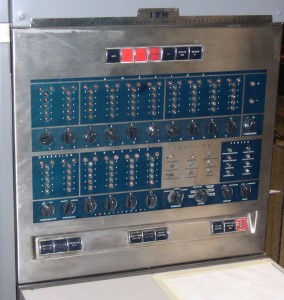|
Quibinary
Bi-quinary coded decimal is a numeral encoding scheme used in many abacuses and in some early computers, notably the Colossus. The term ''bi-quinary'' indicates that the code comprises both a two-state (''bi'') and a five-state (''quin''ary) component. The encoding resembles that used by many abacuses, with four beads indicating the five values either from 0 through 4 or from 5 through 9 and another bead indicating which of those ranges (which can alternatively be thought of as +5). Several human languages, most notably Fula and Wolof also use biquinary systems. For example, the Fula word for 6, ''jowi e go'o'', literally means ''five lusone''. Roman numerals use a symbolic, rather than positional, bi-quinary base, even though Latin is completely decimal. The Korean finger counting system Chisanbop uses a bi-quinary system, where each finger represents a one and a thumb represents a five, allowing one to count from 0 to 99 with two hands. One advantage of one bi-quinary ... [...More Info...] [...Related Items...] OR: [Wikipedia] [Google] [Baidu] [Amazon] |
Binary Number
A binary number is a number expressed in the Radix, base-2 numeral system or binary numeral system, a method for representing numbers that uses only two symbols for the natural numbers: typically "0" (zero) and "1" (one). A ''binary number'' may also refer to a rational number that has a finite representation in the binary numeral system, that is, the quotient of an integer by a power of two. The base-2 numeral system is a positional notation with a radix of 2. Each digit is referred to as a bit, or binary digit. Because of its straightforward implementation in digital electronic circuitry using logic gates, the binary system is used by almost all modern computer, computers and computer-based devices, as a preferred system of use, over various other human techniques of communication, because of the simplicity of the language and the noise immunity in physical implementation. History The modern binary number system was studied in Europe in the 16th and 17th centuries by Thoma ... [...More Info...] [...Related Items...] OR: [Wikipedia] [Google] [Baidu] [Amazon] |
Soroban
The is an abacus developed in Japan. It is derived from the History of Science and Technology in China, ancient Chinese suanpan, imported to Japan in the 14th century. Like the suanpan, the soroban is still used today, despite the proliferation of practical and affordable pocket electronic calculators. Construction The soroban is composed of an odd number of columns or rods, each having beads: one separate bead having a value of five, called and four beads each having a value of one, called . Each set of beads of each rod is divided by a bar known as a reckoning bar. The number and size of beads in each rod make a standard-sized 13-rod soroban much less bulky than a standard-sized suanpan of similar expressive power. The number of rods in a soroban is always odd and never fewer than seven. Basic models usually have thirteen rods, but the number of rods on practical or standard models often increases to 21, 23, 27 or even 31, thus allowing calculation of more digits or repres ... [...More Info...] [...Related Items...] OR: [Wikipedia] [Google] [Baidu] [Amazon] |
